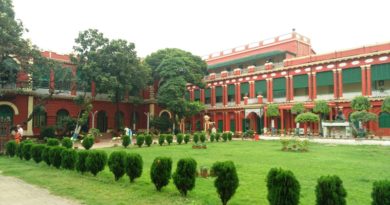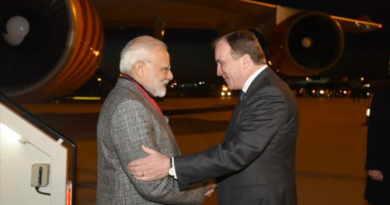CONNONISSERS In United States Eagerly Awaiting Mrinalini Mukherjee’s Retrospective
In summer 2019, sculptor Mrinalini Mukherjee (1949–2015) will be the subject of a revelatory retrospective at The Met Breuer. Born in Mumbai in 1949 and breathed her last in Delhi, Mrinalini Mukherjee is the daughter of renowned artists Benode Behari and Leela Mukherjee. She studied Painting at the Faculty of Fine Art, M.S. University, Baroda (1965-1970), and then studied mural design under artists like K.G. Subramanyan, receiving a Post-Diploma in the field in 1970. Mukherjee’s recent bronzes, like her earlier sculptures, are inspired by nature and its energies and elements. They are reminiscent of the artfulness of ancient temples, where the plethora of plant life is abstracted and contained by anthropomorphic statuaries, and where leafy tendrils cover the walls and pillars. Intricately worked, these sculptures encompass the history of the divine icon with its origin in the organic world and the human body, at a stage when all life participated in the sacred. The shapes the sculptor creates, using the lost-wax process of casting or ceriperdue, are symbolic of continuous movement and evolution, possessing a quality of living plants that emerge and stir and burst into flowers. These pieces are an extension of Mukherjee’s iconic early work with natural fibers like hemp, and her ceramic goddesses-blossoms series from the 1990s. Mrinalini Mukherjee to be on view June 4 through September 29, 2019, will mark the first comprehensive display of the artist’s work in the United States. The exhibition will bring together 57 pieces by Mukherjee and will explore the artist’s longstanding engagement with fiber along with her significant forays into ceramic and bronze from the middle and latter half of her career. The exhibition is made possible by Nita and Mukesh Ambani and the Reliance Foundation. r. Subramanyan firmly rejected the Western modernist hierarchy between art and craft and encouraged his students, including Mukherjee, to engage with this legacy. It was under his guidance that Mukherjee first experimented with fiber.A committed sculptor who worked intuitively, never resorting to a sketch or preparatory drawing, Mukherjee in her forms explored the divide between figuration and abstraction. Nature was her primary inspiration, and this was further informed by her enthusiasm for Indian historic sculpture, modern design, and local crafts and textile traditions. The exhibition will seek to highlight the radical intervention Mukherjee made by adapting crafting techniques with a modernist formalism. The artist’s fiber forms are physical and organic. She never worked with a loom; instead, knotting became her primary technique and it imbued her sculptures with three-dimensional volume and a sense of monumentality. She used natural as well as hand-dyed ropes sourced from a local market in New Delhi, where she lived and worked. The forms she fashioned are replete with sexual imagery, while some of her large anthropomorphic pieces—in which the vegetal, human, and animal coalesce—at times suggest the imagery of classical Indian sculpture. Phenomenal Nature will also present the latter half of Mukherjee’s career in the mid-1990s, when, prompted by a residency at the European Ceramics Work Centre in the Netherlands, she began working with ceramics, eventually taking on bronze in 2003. Probing the divide between figuration and abstraction, Mukherjee would go on to fashion unusual, mysterious, sensual, and, at times, unsettlingly grotesque forms, commanding in their presence and scale. Phenomenal Nature: Mrinalini Mukherjee is organized by Shanay Jhaveri, Assistant Curator of South Asian Art in The Met’s Department of Modern and Contemporary Art. Education programs are made possible in part by Peter Louis-Chandru Ramchandani.




